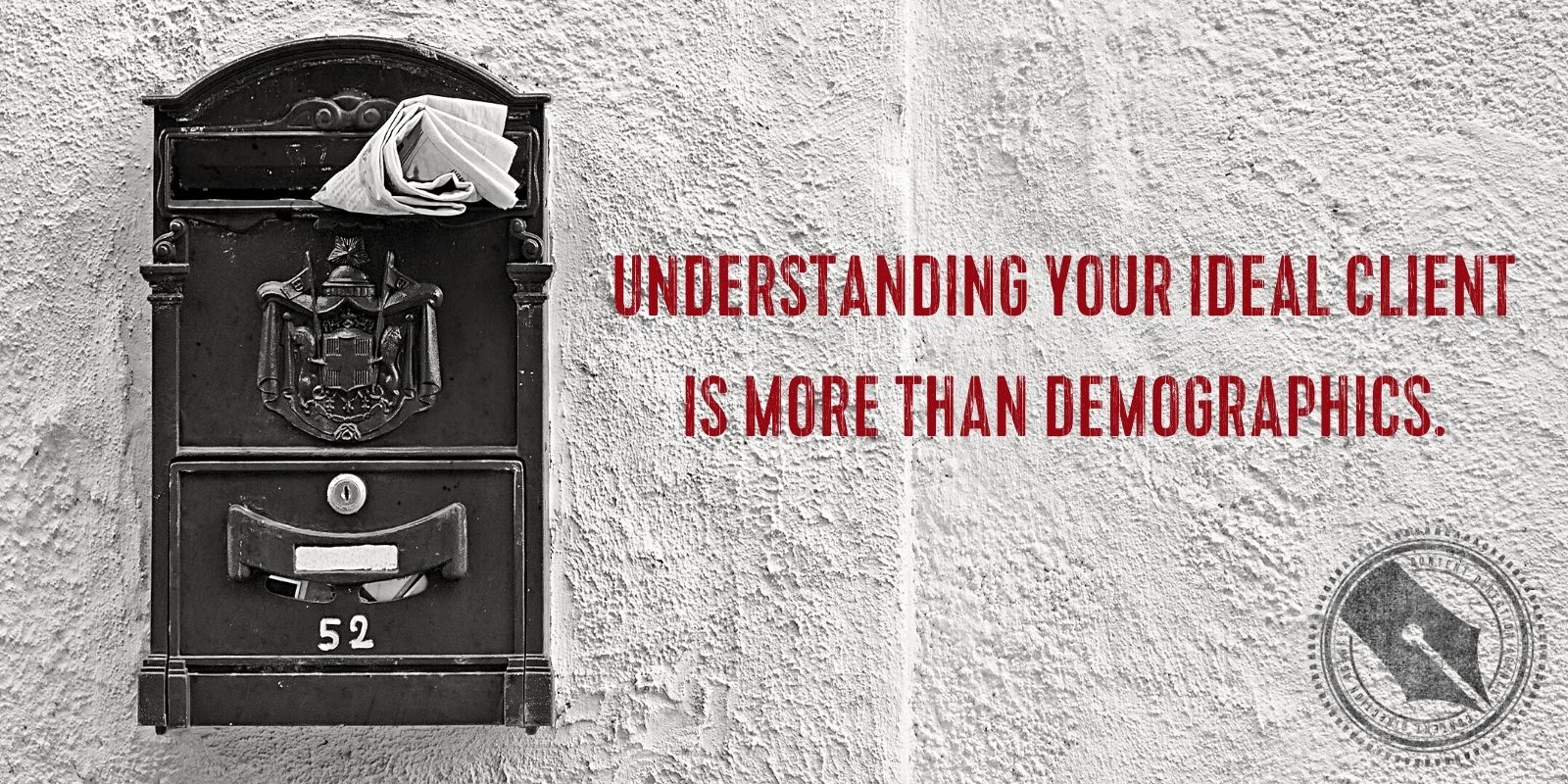Over on Tumblr, there’s a thriving community of (mostly fiction) writers. They call themselves Writeblrs. They post updates on their works in progress, make pretty graphics to go with their stories, support one another…
…and spend seemingly endless amounts of time developing their characters.
There are checklists and worksheets and templates and games that go around that ask the writer to share innumerable banal details about every character.
Like what kind of sushi do they like to eat?
What rides do they visit at Disneyland?
What’s their go-to order at a coffee shop?
Do they get dressed shoe-sock, shoe-sock, or sock-sock, shoe-shoe?
(You think I’m kidding, but I’m not.)
And it reminds me a lot of those ideal customer profiles that we’ve all seen at one point or another.
They are mostly concerned with demographic information, like, “women, age 35-45, living in the suburbs, with 2.5 children, two cats and a dog…” etc.
A lot of times they also ask for things like, what’s their favorite TV show? What magazines do they read? What kind of car do they drive?
But the problem with both the character games and the ideal customer profiles is that this information may or may not be useful in the long run.
Like, does it matter what ride my main character would choose at Disney — if it’s a historical fiction set in eighteenth century Asia?
Does it matter if my ideal client has a dog if my business has nothing to do with pets?
Not so much.
You do need to understand who your ideal customer is…
Now, don’t get me wrong: You absolutely do need to understand who your ideal customer is.
In fact, I prefer the term “most valuable customer” because that gets very specific as to the type of person who will buy from you more than once and spread the word about your genius.
In fact, understanding your customer is one of the three elements of a Leadership Marketing strategy.

But I roll my eyes at the idea that you need to fill out a long worksheet of demographic information to understand them.
ESPECIALLY if it’s a template that someone else created.
Think about it this way: if you’re a coach for post-menopausal women, gender and age are super important to know about your ideal customer!
But if you’re a graphic designer who likes working with nonprofits… the gender and age of the CEO don’t really make any difference.
Focus on this information to create a truly useful ideal customer profile
So instead of just downloading someone else’s template, or filling out an ideal customer profile worksheet because your coach wants you to, I suggest thinking about these questions instead of (or in addition to) all that demographic data:
1. What is their urgent pain in their own words?
You need to be able to identify exactly what problem your people believe they have and the words they use to talk about it. This is key, because your solution might not be exactly what they think they need — which is OK, but you have to identify that in order to be able to talk to them and educate them toward your solution.
2. How do you know they can afford your product/service and will be willing to pay?
Sometimes this means knowing about how much revenue they’re making or what their annual salary is. Sometimes this just means understanding when their pain is urgent enough that they’re willing to invest.
3. What demographic information do you need to know about them?
So, if you only work with women-identified persons, or people of a certain age, or parents, or pet owners — that is important demographic information.
For me, for example, my clients skew female, but we’ve had some awesome male clients. So it doesn’t make sense for us to say we only work with womxn. We’ve worked with solopreneurs who’ve just crested six figures all the way up to a business making $4 million a year. They live all over the world. So those typical demographic questions don’t help me very much.
4. How do they like to consume content? Is there a specific way they DON’T like to engage?
Of course, this is important to ME as a content strategist — but it’s important to you, too. If you already have content channels, you have qualitative data about where you get the best engagement. If you don’t, you can make some educated guesses. For example, busy professionals might prefer a podcast over long articles or videos.
5. What are their biggest anxieties or objections to your products or services?
This is important to know, because the magic of content is that you can help overcome these objections before people even realize they have them.
With that information, you’ve got a really good start on understanding your ideal customer and how to create Leadership Marketing content that will reach those customers.

